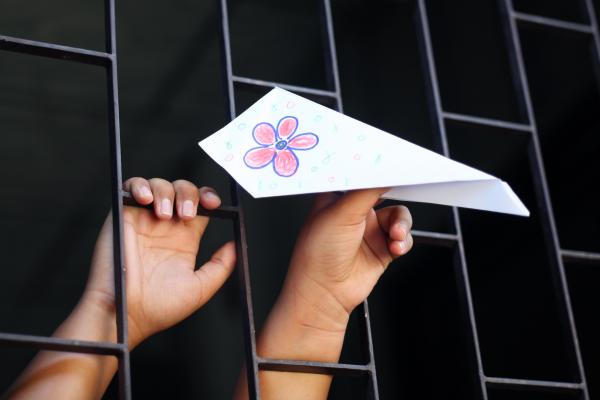It is 7:30 a.m. and I am driving to Tacoma, Wash., to visit a detainee at the Northwest Detention Center and do a psychological assessment for their case. Each time I drive there, I have good 30 minutes to think about the person I’ll see: about the relief they are seeking, and the horrid pawn scheme that is the for-profit business of migrant detention. But the thing that I think about the most — and this is a confession — is the gap between how badly this person may look like on paper and the treasure of a person that I am about to meet.
It happens every time. With only a few exceptions, detainees considered “level 3” in detention — you know, the “Hannibal Lecters,” according to the highest level of such classification — are people like you and me, who simply had a past misdemeanor. They are parents, daughters, sons, sisters who are part of a supportive and loving community, usually gainfully employed before being torn away from their family. Neighbors whose experience must be contextualized within the dynamics of what author Michelle Alexander calls “the new Jim Crow,” and that the Latino community has appropriated as “the Juan Crow.” Within such context, immigrants fall prey to a mass incarceration system made to profit from the vulnerability afforded by their lack of status.
Looking at it with “kingdom” eyes, it is clear that Immigration and Custom Enforcement (ICE) works on a false claim: That people in deportation proceedings are a threat to public safety.
Based on this lie, many private companies make billions, and their profits depend on the reproduction of this false story. But the truth is — according to the American Immigration Council — only 2 percent of the millions of deportees had violent crimes. The rest, they found, are “a threat to no one.”
Think about all the families represented by this 98 percent: the children who were left with no parent; the spouses who are now trying to make it on their own; the church ministries and locally-owned businesses they left behind. The losses brought forth by these deportations for neighborhoods across the country are unfathomable.
But if the lie is that immigrants are a threat (or “rapists,” and “terrorists,” if you are into that kind of talk), what is the truth?
Back to my earlier confession: What does it mean to find a treasure?
Much of our immigration advocacy work is built upon the task to show immigrants in a favorable and sympathetic light to white evangelicals — constructingpersonas for the privileged gaze. This was exemplified in Obama’s remarks when announcing his executive action on DAPA in November 2014, “Felons, not Families.” He missed the reality that we live in a country where becoming a felon is far easier than paying for college education. Most of us can name a family member who has been imprisoned (and plenty more with college debt!).
This tension between “the good and the bad apples” plays at all levels of public life. Within the church, one can often hear heads of organizations wanting to help “the vulnerable” — “women and children.”
So, to gain traction, I could use this segment to tell you about “Maria” who wakes up at 4:30 a.m. every day, to selflessly care for her five disabled children while she prays for the homeless people she feeds at the shelter. But that is not Maria — not the real one. That version of Maria is a thing to consume. Is that what we truly want to do with storytelling? Is that what it means to see God’s image in our brothers and sisters?
The power of story lies in its capacity to bring complexity and nuance to these binaries we create. And the only way to accomplish that is by listening to the voices of the people primarily affected by the systems we seek to change.
For the past seven years, I have had the chance to sit with people in deportation proceedings and listen to their life story — all of it. I personally have performed about 300 psychosocial evaluations, and supervised hundreds more. These evaluations are presented in immigration court to provide context or evidence to each case.
The beautiful thing about this work is that during the two to three hours one spends carefully listening, one begins a transformative process wherein the truths and the lies of the system transpire in powerful ways through the voice of the very people affected by such system. What you find as a result of listening is complex people, like you and me — beautiful, broken, repentant, hopeful, and almost always “badass.”
The real power of these assessments is that they become safe spaces for people to tell their own story and in their own terms. Change lies in our collective capacity to open more avenues for first person accounts — and, more importantly, to translate these accounts into first person movements.
Got something to say about what you're reading? We value your feedback!
